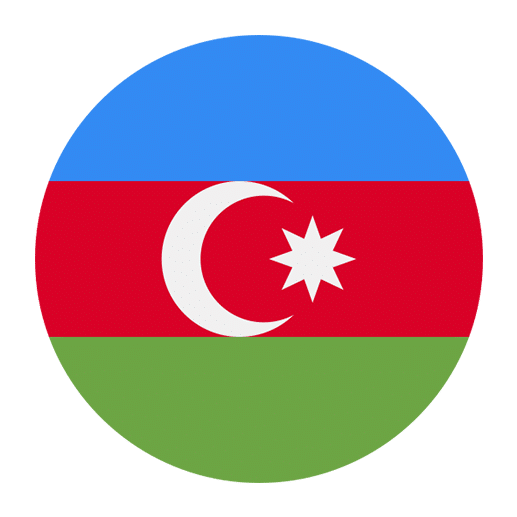Language learning is a fascinating journey that opens up new worlds and opportunities. One of the most intricate and rewarding parts of learning a new language is understanding its grammar. Today, we delve into the realm of Azerbaijani adverbs, exploring their types and usage to help you gain a deeper understanding of this beautiful language.
What Are Adverbs?
Before diving into Azerbaijani adverbs, let’s clarify what adverbs are in general. Adverbs are words that modify verbs, adjectives, or other adverbs. They provide additional information about how, when, where, or to what extent something happens. In English, common adverbs include words like “quickly,” “very,” “here,” and “yesterday.”
Types of Adverbs in Azerbaijani
Azerbaijani, like many other languages, has a rich set of adverbs that perform various functions. Here are the main types of adverbs you’ll encounter:
1. Adverbs of Manner
Adverbs of manner describe how an action is performed. They answer the question “how?” In Azerbaijani, these adverbs often end in -ca or -cə. Here are some examples:
– Yavaşca (slowly)
– Tez (quickly)
– Gözəlcə (beautifully)
– Sakitcə (quietly)
Example Sentence: O, yavaşca danışdı. (He/She spoke slowly.)
2. Adverbs of Time
Adverbs of time indicate when an action takes place. They answer the question “when?” Some common Azerbaijani adverbs of time are:
– Dünən (yesterday)
– Bu gün (today)
– Sabah (tomorrow)
– İndi (now)
– Sonra (later)
Example Sentence: Biz sabah gedirik. (We are going tomorrow.)
3. Adverbs of Place
Adverbs of place provide information about the location of an action. They answer the question “where?” Here are a few examples in Azerbaijani:
– Burada (here)
– Orada (there)
– Yuxarıda (upstairs)
– Aşağıda (downstairs)
Example Sentence: Kitab burada. (The book is here.)
4. Adverbs of Frequency
These adverbs explain how often an action occurs. They answer the question “how often?” Some common Azerbaijani adverbs of frequency include:
– Həmişə (always)
– Tez-tez (often)
– Bəzən (sometimes)
– Nadirdə (rarely)
– Heç vaxt (never)
Example Sentence: O, həmişə səhər yeməyi yeyir. (He/She always eats breakfast.)
5. Adverbs of Degree
Adverbs of degree describe the intensity or degree of an action, an adjective, or another adverb. They answer the question “to what extent?” Here are some examples:
– Çox (very)
– Az (a little)
– Tamamilə (completely)
– Həddindən artıq (too much)
– Yeterincə (enough)
Example Sentence: Mən çox yorğunam. (I am very tired.)
Formation of Adverbs in Azerbaijani
In Azerbaijani, adverbs can be formed in several ways. Understanding these formations will help you recognize and use them correctly in sentences.
1. Using Suffixes
Many adverbs in Azerbaijani are formed by adding specific suffixes to adjectives or nouns. The most common suffixes are -ca, -cə, -lə, -lərlə, and -nan.
– Gözəl (beautiful) + -cə = Gözəlcə (beautifully)
– Yavaş (slow) + -ca = Yavaşca (slowly)
– Sakit (quiet) + -cə = Sakitcə (quietly)
Example Sentence: O, gözəlcə oxudu. (He/She sang beautifully.)
2. Combining Words
Sometimes, adverbs are formed by combining two words. This method is common for creating adverbs of time and place.
– Bu gün (today)
– Bu axşam (this evening)
– Hər zaman (always)
Example Sentence: Mən bu gün evdə qalıram. (I am staying at home today.)
3. Using Independent Words
Certain adverbs are independent words that do not require any modification. These are often basic adverbs of time, place, and manner.
– Sabah (tomorrow)
– Burada (here)
– Tez (quickly)
Example Sentence: Biz sabah gedirik. (We are going tomorrow.)
Position of Adverbs in Sentences
The position of adverbs in Azerbaijani sentences can vary, but there are general guidelines that can help you place them correctly.
1. Adverbs of Manner
Adverbs of manner usually come after the verb they modify. However, they can also be placed at the beginning of the sentence for emphasis.
Example Sentence: O, yavaşca danışdı. (He/She spoke slowly.)
For emphasis: Yavaşca, o danışdı. (Slowly, he/she spoke.)
2. Adverbs of Time
Adverbs of time can be placed at the beginning or end of a sentence. The position often depends on what you want to emphasize.
Example Sentence: Sabah biz gedirik. (Tomorrow we are going.)
Or: Biz sabah gedirik. (We are going tomorrow.)
3. Adverbs of Place
Adverbs of place typically follow the verb they modify but can also precede the verb for emphasis.
Example Sentence: Kitab burada. (The book is here.)
For emphasis: Burada kitab var. (Here, there is a book.)
4. Adverbs of Frequency
Adverbs of frequency usually come before the main verb but after the auxiliary verb (if there is one).
Example Sentence: O, həmişə səhər yeməyi yeyir. (He/She always eats breakfast.)
5. Adverbs of Degree
Adverbs of degree generally come before the adjective, adverb, or verb they modify.
Example Sentence: Mən çox yorğunam. (I am very tired.)
Comparative and Superlative Forms of Adverbs
In Azerbaijani, as in English, adverbs can be modified to express comparisons. There are comparative and superlative forms that help you convey different degrees of intensity or frequency.
1. Comparative Form
The comparative form of adverbs is used to compare two actions or states. It is often formed by adding -daha before the adverb.
– Tez (quickly) → Daha tez (more quickly)
– Yavaşca (slowly) → Daha yavaşca (more slowly)
Example Sentence: O, daha tez qaçır. (He/She runs more quickly.)
2. Superlative Form
The superlative form is used to indicate the highest degree of the adverb among three or more actions or states. It is formed by adding the word ən before the adverb.
– Tez (quickly) → Ən tez (the most quickly)
– Yavaşca (slowly) → Ən yavaşca (the most slowly)
Example Sentence: O, ən tez qaçır. (He/She runs the most quickly.)
Common Mistakes and How to Avoid Them
Learning a new language always comes with its set of challenges, and Azerbaijani is no different. Here are some common mistakes learners make with adverbs and tips on how to avoid them.
1. Misplacing Adverbs
One of the most common mistakes is placing the adverb in the wrong position within a sentence. This can change the meaning or make the sentence sound awkward.
Tip: Always double-check the position of your adverbs. Refer to the general guidelines mentioned earlier in this article.
2. Confusing Adverbs with Adjectives
Another common mistake is confusing adverbs with adjectives. Remember, adjectives modify nouns, while adverbs modify verbs, adjectives, and other adverbs.
Tip: When in doubt, ask yourself what the word is modifying. If it’s a verb, adjective, or another adverb, you likely need an adverb.
3. Overusing Adverbs
While adverbs are useful, overusing them can make your sentences cluttered and difficult to understand.
Tip: Use adverbs sparingly and only when they add significant meaning to your sentence.
Practice Exercises
To solidify your understanding of Azerbaijani adverbs, here are some practice exercises. Try to translate the following sentences into Azerbaijani, paying close attention to the correct use and placement of adverbs.
Exercise 1: Adverbs of Manner
1. He speaks quietly.
2. She runs quickly.
3. They sang beautifully.
Exercise 2: Adverbs of Time
1. We will go tomorrow.
2. I am leaving now.
3. They arrived yesterday.
Exercise 3: Adverbs of Place
1. The book is here.
2. She is sitting there.
3. The cat is upstairs.
Exercise 4: Adverbs of Frequency
1. He always eats breakfast.
2. They often visit us.
3. I rarely go to the cinema.
Exercise 5: Adverbs of Degree
1. I am very tired.
2. She is somewhat sad.
3. They are completely ready.
Conclusion
Understanding and correctly using adverbs is crucial for mastering any language, and Azerbaijani is no exception. Adverbs add depth and detail to your sentences, allowing you to express actions and states more precisely. By familiarizing yourself with the types, formation, and placement of adverbs in Azerbaijani, you can significantly enhance your language skills.
Remember, practice is key. The more you use adverbs in your speaking and writing, the more natural they will become. So, take the time to practice with the exercises provided and continue to explore the rich and beautiful world of the Azerbaijani language. Happy learning!

